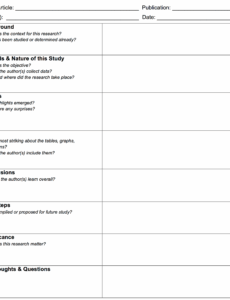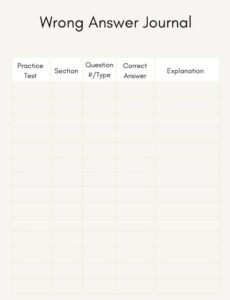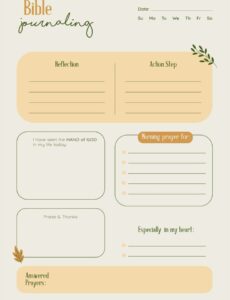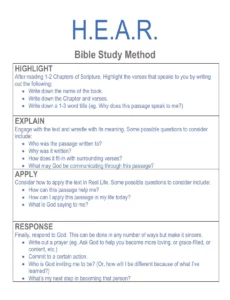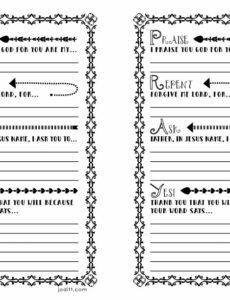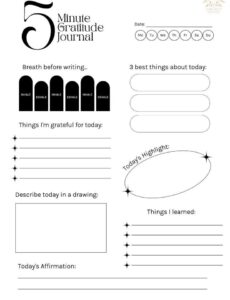Isn’t it amazing how much our little ones notice about the world around them? From the tiniest ladybug to the biggest cloud, their curiosity is boundless. They are natural scientists, constantly observing, questioning, and absorbing information. One of the most dynamic and ever-present phenomena they encounter daily is the weather, yet sometimes we overlook the incredible learning opportunities it presents.
Engaging preschoolers with the daily changes in weather isn’t just about teaching them sunny, cloudy, or rainy; it’s about fostering a deeper connection to nature, building vocabulary, and developing critical observation skills. This is where a simple, fun, and interactive tool comes into play: a weather journal template for preschool. It’s a delightful way to turn everyday observations into a structured, educational adventure that your child will love.
Why a Weather Journal is Perfect for Little Learners
Introducing a weather journal to preschoolers offers a treasure trove of developmental benefits, far beyond just identifying different types of weather. Imagine your child carefully examining the sky, feeling the breeze, and then thoughtfully choosing how to represent their observations. This process alone strengthens their ability to pay attention to details, articulate what they see, and connect abstract concepts to tangible experiences. It’s an early dive into scientific inquiry, encouraging them to predict, observe, and record.
Moreover, a weather journal transforms learning into a playful activity, directly connecting what they see outside to what they do inside. It makes the often-abstract concept of weather something they can interact with, draw, and talk about. This hands-on engagement is crucial for young children, as it allows them to construct their understanding through active participation rather than passive listening. It’s not just about memorizing facts; it’s about experiencing and making sense of their environment.
Key Benefits of Using a Weather Journal
- Fosters keen observation skills by encouraging children to look closely at the sky, feel the air, and notice changes.
- Builds a rich vocabulary as children learn new words like “breezy,” “drizzly,” “foggy,” or “blustery.”
- Introduces basic science concepts, such as cause and effect (rain makes puddles) and patterns (sunny days often follow each other).
- Enhances fine motor skills through drawing, coloring, and potentially cutting and pasting weather symbols.
- Encourages communication and discussion about their observations with parents, teachers, or peers.
The beauty of a weather journal for preschoolers lies in its simplicity and adaptability. It doesn’t require complex scientific instruments or extensive lessons. Instead, it relies on a child’s innate curiosity and the everyday changes in our atmosphere. You can make it as basic or as detailed as suits your child’s age and interest level, ensuring it remains a joyful and pressure-free learning experience. Integrating it into daily routines, whether at home or in a classroom, makes it a natural and consistent part of their learning journey.
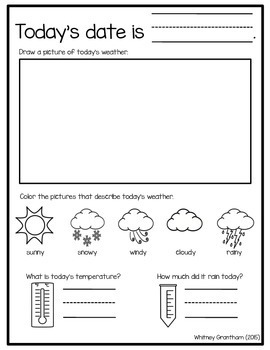
Crafting Your Own Engaging Weather Journal Template for Preschool
Creating an effective weather journal template for preschool doesn’t have to be complicated. The key is to keep it visually appealing, simple to understand, and highly interactive for tiny hands and developing minds. Think about what a preschooler can easily identify and represent. A good template acts as a gentle guide, prompting observation without overwhelming them with too many choices or complex recording methods. It should feel like a fun activity, not a chore.
When designing your weather journal, consider including large, clear spaces for drawing. For preschoolers, drawing is their primary language for expression, and giving them ample room to illustrate what they see will be much more effective than asking them to write words. You might also include simple, recognizable symbols for common weather conditions – a sun for sunny, a cloud for cloudy, raindrops for rain, and snowflakes for snow. These can be pre-printed for them to color in, or they can draw their own.
Simple Elements to Include in Your Template
- Date and Day of the Week: A simple line where an adult can write or guide the child to write.
- Space for Drawing or Gluing Pictures: This is the heart of the journal where creativity shines.
- Checkboxes for Weather Types: Include simple icons for sunny, cloudy, rainy, snowy, and windy. Children can circle or check the relevant one.
- Simple Temperature Indicator: Maybe a simple scale from “cold” to “hot” that they can color or point to.
- A small section for “What I Did Today” or “How the Weather Made Me Feel” for slightly older preschoolers to encourage narrative skills.
Customization is your friend here. Perhaps your child is fascinated by rainbows; you could add a special rainbow section. If they love tracing, include dotted lines for the date or weather words. The more personal and responsive the template is to your child’s interests, the more engaged they will be with their weather journal template for preschool. Remember, the goal is to make it their own, a personal record of their daily discoveries.
Encourage a hands-on approach every day. Step outside together, even for a moment, to observe the sky, feel the air, and listen to the sounds of nature. Guide them through the process of recording their observations in the journal. This consistent, daily ritual not only reinforces their learning but also creates a special bonding time. It transforms a simple task into a meaningful exploration of the natural world, fostering a lifelong appreciation for science and observation.
As children continue to fill their weather journals, they’re not just recording data; they’re building a narrative of their days, seeing patterns emerge, and understanding how the world around them changes. This ongoing engagement helps solidify their understanding of basic scientific concepts and strengthens their connection to the environment. It’s a wonderful way to empower young learners to become curious observers and critical thinkers, laying a strong foundation for future learning adventures.
